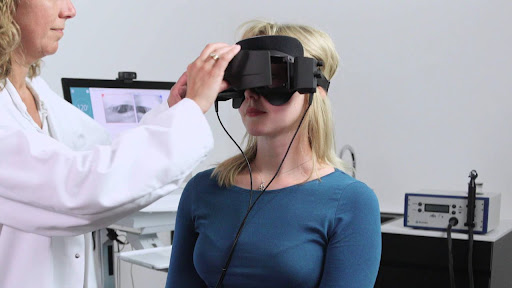The primary objective of VNG is to assess the vestibular system, which includes the inner ear and the associated neural pathways responsible for balance and spatial orientation.

VNG testing typically involves a series of subtests to assess different aspects of vestibular function. These may include:
Observation of involuntary eye movements in the absence of external stimuli.
Assessment of eye movements in response to changes in gaze direction.
Introduction of warm and cold air or water into the ear canals to induce nystagmus and assess the vestibular response.
Evaluation of eye movements in response to moving visual stimuli.
During VNG testing, the patient wears infrared video goggles that allow precise recording of eye movements. The recordings are analyzed to detect abnormal eye movements and assess vestibular function.
VNG is commonly used to diagnose and evaluate disorders of the vestibular system, including:
Benign Paroxysmal Positional Vertigo (BPPV): Characterized by brief episodes of vertigo triggered by changes in head position.
Peripheral Vestibular Dysfunction: Conditions affecting the inner ear, such as vestibular neuritis or Meniere's disease.
Central Vestibular Dysfunction: Disorders affecting the central nervous system, including brainstem or cerebellar lesions.